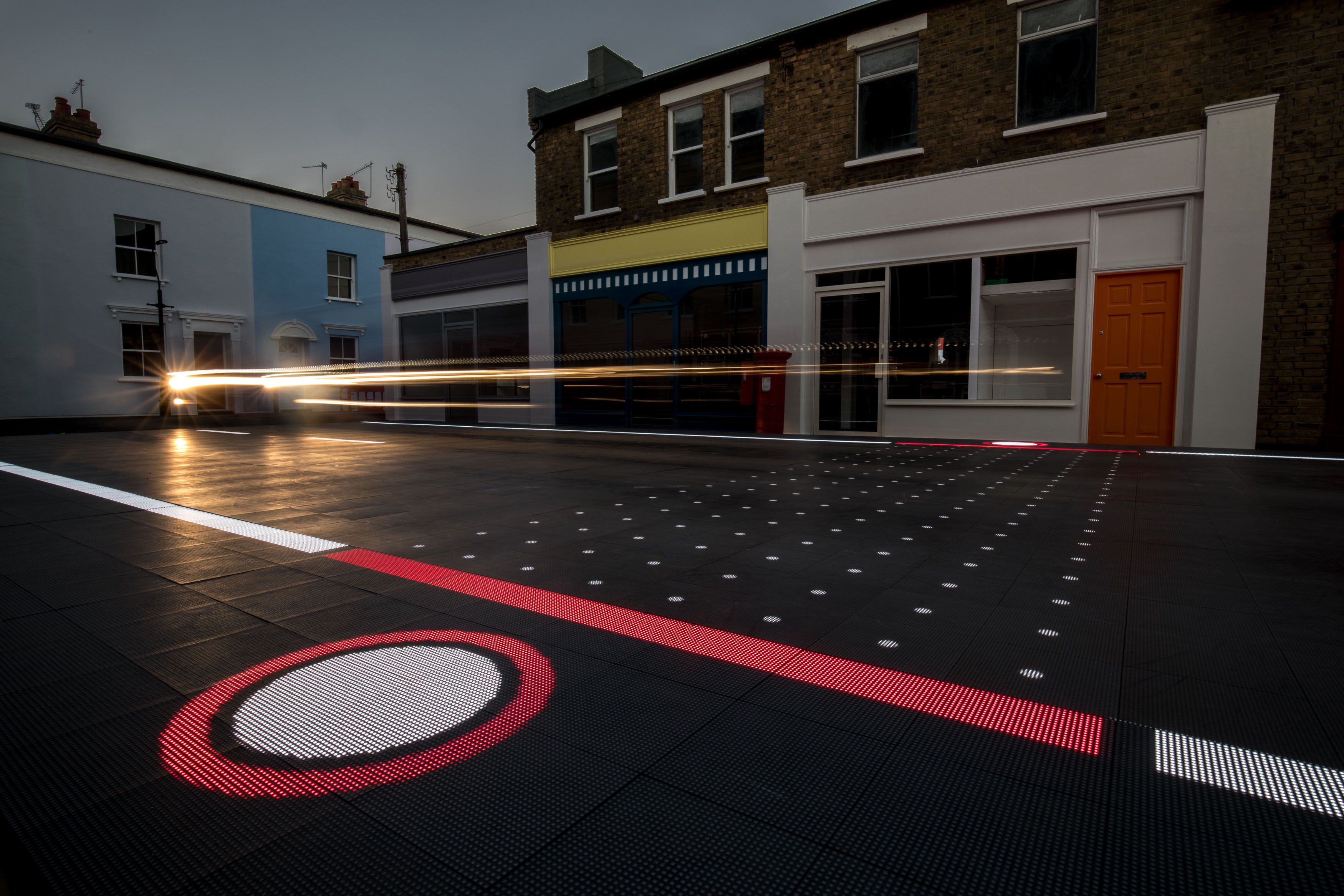
The crossing, a prototype, was developed for UK insurance company
The Smart Crossing dimensions covers an area of 7.5m x 22m road surface. The prototype is waterproof, is not damaged by the weight of vehicles and recognises the difference between pedestrians, vehicles and cyclists.
According to the manufacturers, it uses computer vision technology to “see” exactly what’s happening around it. It comprises an LED road surface that automatically changes its markings according to activity on the surface and nearby the crossing.
It can pre-empt pedestrians’ movement and where their eyeline is most likely to be, which help to ensure it grabs attention to limit danger. The area can widen to accommodate large groups, a feature that the manufacturer says could help reduce the number of crowd-related incidents outside schools or sporting events.
It will adapt to protect pedestrians in emergency situations, such as a child chasing a ball into the path of oncoming traffic. It can also provide warning signals for pedestrians walking across the road to ensure they’re not hidden by high-sided vehicles which can cause a blind spot for other road users.
The crossing pattern will change to grab the attention of so-called 'smombies' (smartphone zombies) - pedestrians engrossed in their mobile phones while walking. The crossing will urge them to look up and focus on crossing the road safely.
"The Smarter Crossing responds in real time, using technology which has been designed with colours that we know and understand and practical designs that help those on the crossing feel comfortable, confident and safe,” explained Usman Haque, founding partner of Umbrellium. “Pedestrian crossings as we know them were made for a different age, when the human relationship with the city was completely different.”
The technology has received backing from road safety charity Brake and the UK government’s Parliamentary Advisory Council for Transport Safety.





